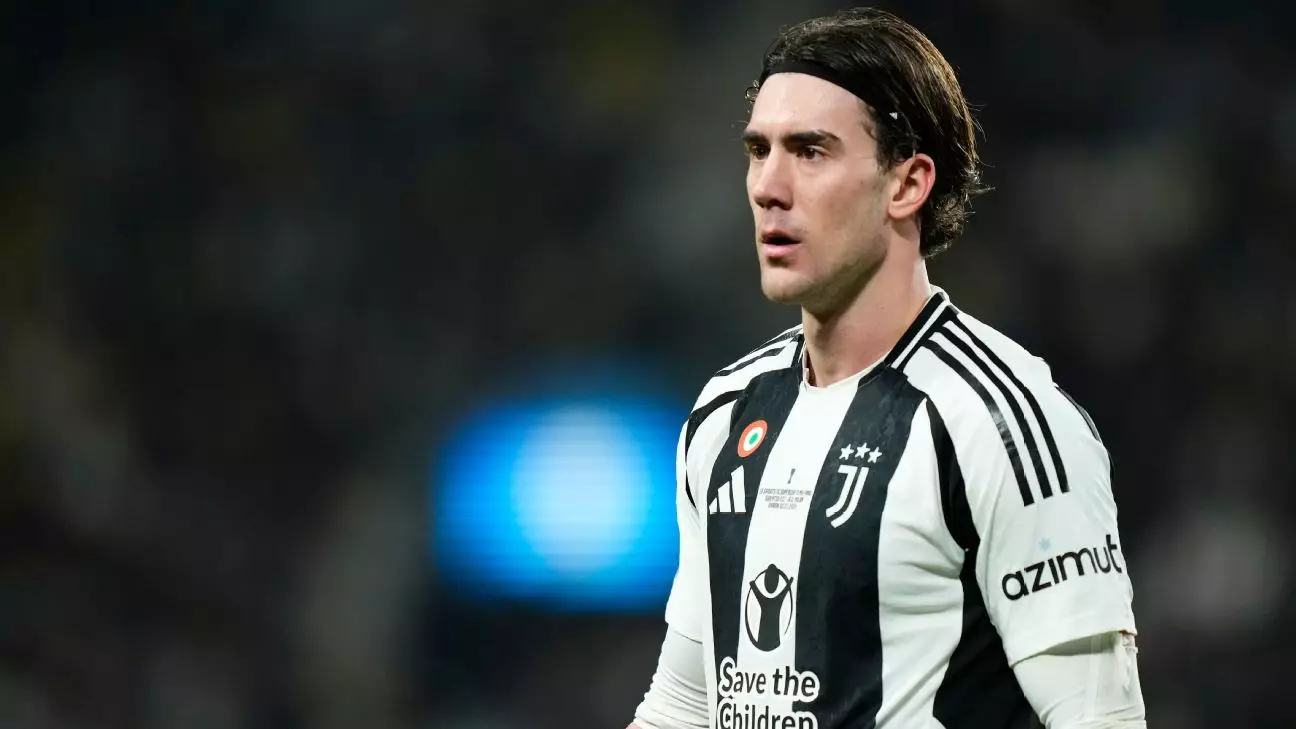The football transfer market has always been a dizzying whirlwind of speculation, money, and ambition. This January, notable clubs like Chelsea, Barcelona, Manchester United, and Napoli are making headlines as they pursue promising talent. However, at the heart of these transfers lies a complex interplay of strategy, financial constraints, and the quest for competitive advantage. This article delves into some of the most intriguing stories and prospects while shedding light on the realities that often accompany these grand ambitions.
Chelsea’s Bid for Juventus’ Vlahovic: A Calculated Gamble
Chelsea’s interest in Dusan Vlahovic, the 24-year-old striker from Juventus, is a reflection of a club trying to rectify its inconsistent attacking options. The proposed deal to include defender Renato Veiga as part of the transaction highlights a strategic maneuver to reduce the financial burden of a significant €60 million transfer fee. Vlahovic, despite his considerable talent and scoring prowess—53 goals in 124 appearances at Juventus—has struggled to find his footing in Italy. Remaining under contract until 2026, the Serbian international’s departure is not merely motivated by personal ambitions but also necessity for Juventus, which is grappling with financial limitations following substantial losses.
Critically, Vlahovic is not only a financial investment but also a risk; his recent failure to adapt to a challenging environment in Turin raises questions about whether he can thrive in the Premier League. Chelsea needs a consistent goal-scorer, but whether Vlahovic can provide that amidst Chelsea’s turbulent recent form is uncertain. If adding Veiga helps sweeten the deal, it may signal to fans and analysts alike that Chelsea’s ambitions may outweigh their risks in this partnership.
Barcelona’s strategy to pursue Bayern Munich’s Jamal Musiala adds another ambitious layer to the ongoing conversation around elite talent acquisition in football. Musiala, 21, is increasingly seen as a pivotal figure for Bayern, and despite having a contract until 2026, Barcelona’s interest is indicative of a long-term vision that prioritizes youthful dynamism on the pitch. However, the assertion that he is a “marquee signing” for the summer raises questions about Barcelona’s financial viability after recent trials with the club’s wage bill and financial integrity.
From a broader perspective, Musiala’s addition to an already competitive roster could be a double-edged sword. While his attacking flair and creativity would undeniably enhance Barcelona’s offensive capabilities, such a move places additional pressure on emerging talents within the club. This can lead to friction among players, where talent competition might disrupt harmony, particularly in clubs still finding their footing after financial turmoil.
Manchester United’s Struggles: Rashford and Other Targets
At Manchester United, the news surrounding Marcus Rashford is layered with complexity. Reports of Borussia Dortmund’s interest in a loan deal reinforce the notion that the club must evaluate its attacking options carefully. With Rashford reportedly open to new opportunities amidst managerial fluctuations, the implications of his potential departure are significant—not only for United but also for his career trajectory. Concerns regarding the valuation of his loan package suggest that United must consider the financial feasibility of retaining him while pursuing necessary reinforcements, particularly a left-back—a position cited as an immediate priority.
For a club that has long prided itself on nurturing talent, the potential loss of Rashford could signify a deeper internal discord, especially as external competition for his signature intensifies. His performance must be analyzed in the context of a system that doesn’t leverage his strengths effectively, suggesting that any potential switch could revitalise his career.
Napoli’s reported approach to signing Alejandro Garnacho from Manchester United encapsulates a broader trend wherein clubs seek to invest smartly in established or emerging talents who can immediately impact the squad. The €55 million proposal positions Napoli to land a player who had fallen out of favor at United, thus seeing him as a perfect fit for their attacking needs after selling key players. This adaptability is essential for clubs that wish to remain competitive without succumbing to the financial pressures faced by their more affluent counterparts.
The current transfer narratives reek of both opportunity and foreboding realities in the football world. Clubs are constantly navigating the treacherous waters of finance, talent acquisition, and operational integrity. Future moves will not only shape club dynamics but also reflect the ongoing evolution of the game, as agents, clubs, and players alike adapt to the ever-changing landscape of football investments and ambitions. With speculation rife, the true measure of success will only be determined once players don their respective jerseys and perform on the pitch.
